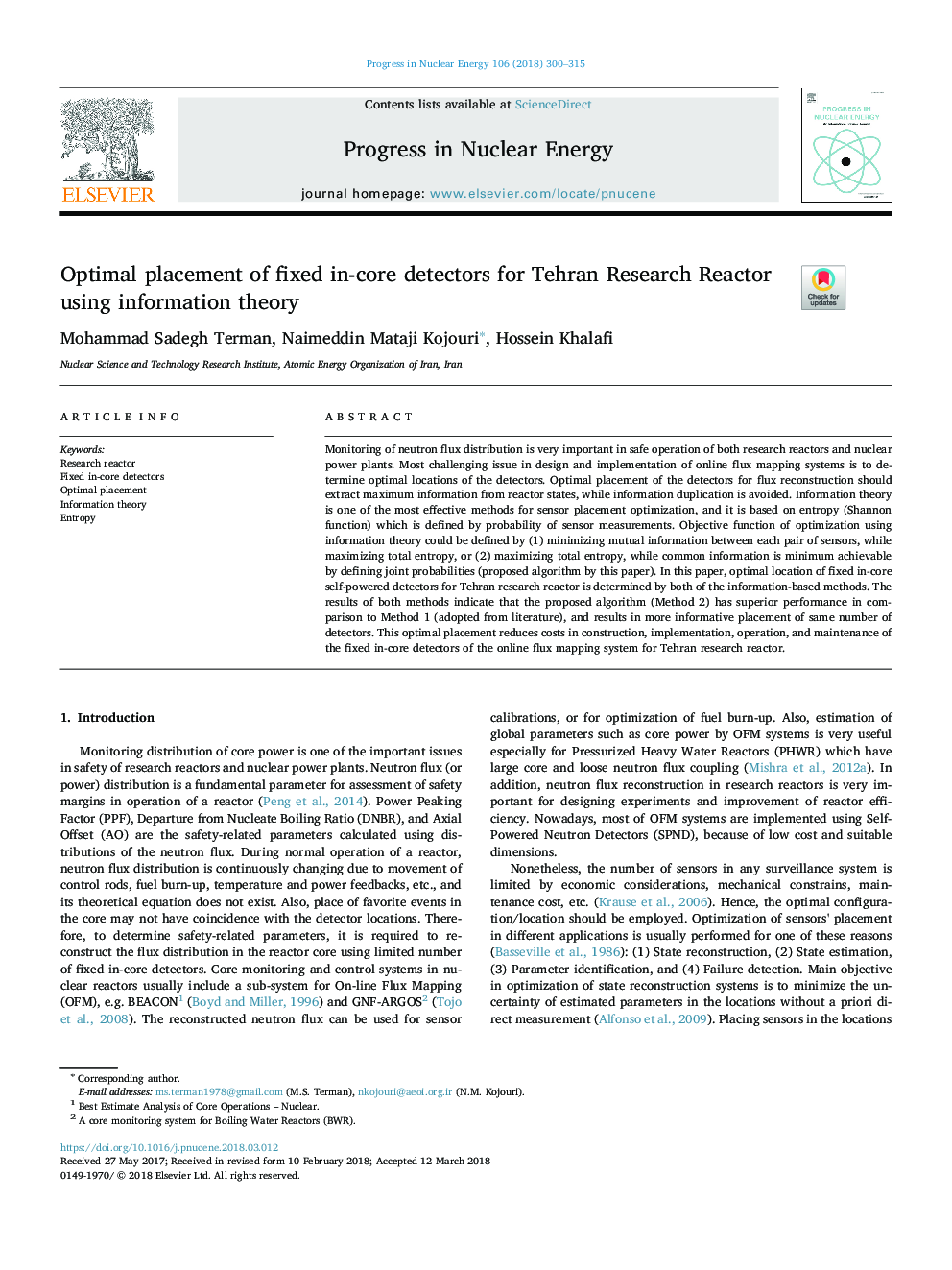| Article ID | Journal | Published Year | Pages | File Type |
|---|---|---|---|---|
| 8084310 | Progress in Nuclear Energy | 2018 | 16 Pages |
Abstract
Monitoring of neutron flux distribution is very important in safe operation of both research reactors and nuclear power plants. Most challenging issue in design and implementation of online flux mapping systems is to determine optimal locations of the detectors. Optimal placement of the detectors for flux reconstruction should extract maximum information from reactor states, while information duplication is avoided. Information theory is one of the most effective methods for sensor placement optimization, and it is based on entropy (Shannon function) which is defined by probability of sensor measurements. Objective function of optimization using information theory could be defined by (1) minimizing mutual information between each pair of sensors, while maximizing total entropy, or (2) maximizing total entropy, while common information is minimum achievable by defining joint probabilities (proposed algorithm by this paper). In this paper, optimal location of fixed in-core self-powered detectors for Tehran research reactor is determined by both of the information-based methods. The results of both methods indicate that the proposed algorithm (Method 2) has superior performance in comparison to Method 1 (adopted from literature), and results in more informative placement of same number of detectors. This optimal placement reduces costs in construction, implementation, operation, and maintenance of the fixed in-core detectors of the online flux mapping system for Tehran research reactor.
Related Topics
Physical Sciences and Engineering
Energy
Energy Engineering and Power Technology
Authors
Mohammad Sadegh Terman, Naimeddin Mataji Kojouri, Hossein Khalafi,
